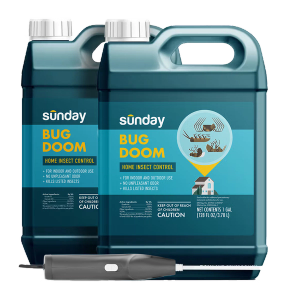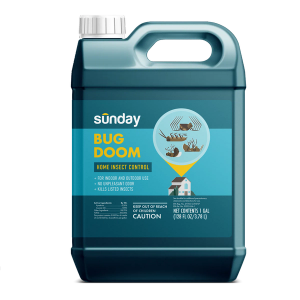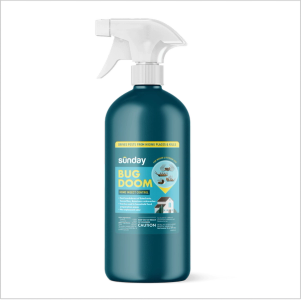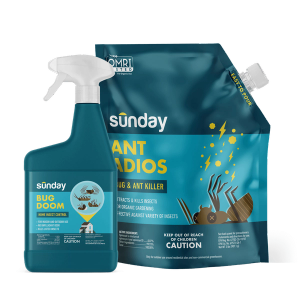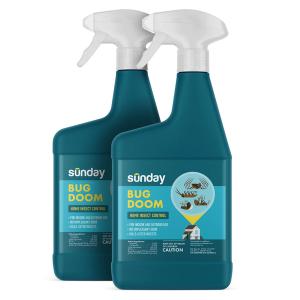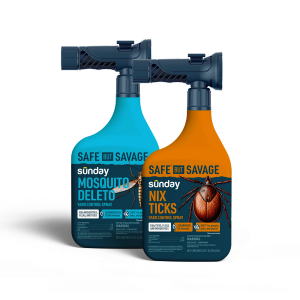The problem with armyworms
Occasionally, weather patterns (think hurricanes, severe wind and rain storms, and associated flooding) will create the perfect setting for a severe fall armyworm outbreak. And once these caterpillars get to munching, they can annihilate a lawn within a matter of days.
How to ID fall armyworms
Knowing your enemy—and knowing how to prevent and mitigate damage—starts with proper pest identification. The damaging stage of the armyworm, and the stage you’re most likely to notice and ID, is the “larvae” or the caterpillar. Caterpillars are:
- Up to 1.5 inches long
- Green or mottled brown with a darker head
- Wide black stripes down each side of their back
- Four black dots on the back side of each abdomen segment, usually with hairs
- White, upside down “Y” on their head
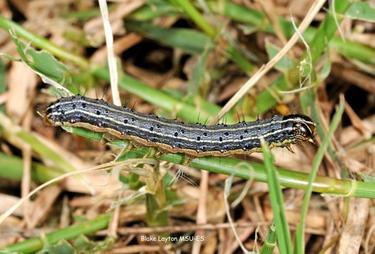
Photo Credit: Blake Layton, MSU-ES, Alabama Cooperative Extension System
Adult armyworms are moths!
You may see armyworm moths flitting around between spring and fall. The moths are nocturnal, and are attracted to lights at night. They have:
- Tan or brown bodies
- Mottled brown forewings with a characteristic white spot near the center
- White hind wings with a brown line around the edge
- Large egg masses that are light gray and fuzzy looking
There will likely be multiple fall armyworm cycles, as larvae can hatch, feed, pupate into moths, and lay more eggs every couple of weeks in many regions!

Photo Credit: Lyle J. Buss, University of Florida, UF | IFAS, Entomology
Common lookalikes
Fall armyworms are often confused with other armyworms and various cutworms.
True armyworm (
- Caterpillars: 1 ½ to 2 inches long; gray to yellowish green tinged with pink; narrow, broken black stripe down the center of the back, with lighter stripes down the sides
- Moths: reddish brown with a white dot in the center of each wing
- Damage: appears in spring

Photo Credit: True Armyworms | University of Arkansas Extension.
Black cutworm (
- Caterpillars: dark gray to black with a pale stripe down the back and light gray underside; smooth and generally hairless
- Moths: mottled brown
- Damage: small (1-2 in.) circular dead spots that increase in size over time
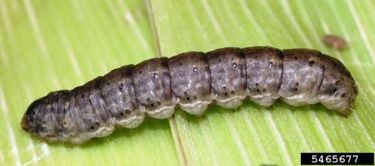
Photo Credit: Black cutworm on soybean | UMN Extension.
Where do fall armyworms live?
Fall armyworms are most common in the southern and transition zones. Adult moths will lay hundreds of eggs on the undersides of leaves (especially those overhanging turf), or on light posts, fences, signs, patio or lawn furniture, and even on walls. Larvae will hatch and fall to the tuf below, where they will begin to feed. They prefer bermudagrass, but will also feed on fescue, ryegrass, bluegrass, bentgrass, and occasionally zoysiagrass. They can also feed on clover, veggies, and crops, if nearby.
When are fall armyworms active?
Fall armyworms are most active in summer and early fall. Adult moths can travel 500+ miles within 24 hours if there are large storms that blow moths along jet streams. This is why large fall armyworm outbreaks are often associated with above average rain and wind storms. Once the larvae hatch, caterpillars feed most actively mid-morning or late evening, but can often be seen feeding mid-day.
How to tell if you have fall armyworms in your lawn
Fall armyworms are unique in their feeding pattern. As their name suggests, armyworms move across the turf en masse—much like an army marching across the lawn. The caterpillars wage war on the lawn by feeding on leaf blades, occasionally leaving a “windowpane” behind, but more often completely defoliating the grass within a matter of days. This leaves the crown (growing point) of the grass exposed to the elements, leading to heat and moisture stress, and even death. There will be a clearly defined line of damage that moves across the lawn rapidly, leaving a dead, defoliated yard in their wake.
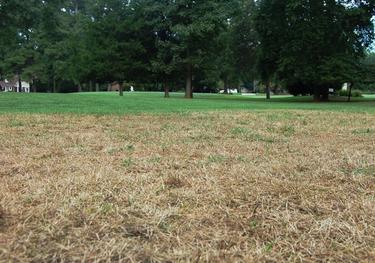
Photo credit. Fall Armyworms on the March Through Piedmont Lawns | NC University Cooperative Extension.
Natural pest prevention and reduction practices
Unfortunately, fall armyworms are difficult to control, partly because they act so quickly and can have multiple life cycles throughout the year. There are a few steps you can take to prevent damage, though:
- Maintain a healthy, dense lawn. Follow proper fertilizer and watering practices to grow a healthy lawn that is more resilient to insect injury.
- Check for eggs. Go on an egg hunt, particularly after large storms. Check the undersides of tree leaves, gutters, fence posts, and lawn furniture. If you find any, scrape them off and dispose of them.

Photo Credit: Grace Christopher, NBC | WFMJ.
- Monitor the lawn. Check for signs of damage, including large brown patches of defoliated grass, with a distinct border.
- Scout for caterpillars. If you do notice damage, and suspect you might have fall armyworms, do a little sleuthing. Go out in the early morning or in the late afternoon to see if you can find caterpillars or green frass (caterpillar poo) at the base of the grass, or do a soapy water flush to draw the pests up from the soil.
How to conduct a soapy water flush:
- Mix 2 tablespoons of dish soap in 1 gallon of water.
- Pour over 1–2 sq. ft. of lawn, along the border of damaged and undamaged turf.
- If any caterpillars (or other pests like mole crickets!) come to the surface, remove by hand.
- Pick your battles. Birds, rodents, wasps, flies, and ground beetles love to feast on a battalion of fall armyworms. This is one of those times that you might want to let one pest take care of another pest for you—although birds and rodents can leave behind holes and mounds, the damage they leave behind is often easier to overcome than fall armyworm damage, which can kill the grass.
If your lawn does sustain some damage from fall armyworms, help it bounce back. Irrigate damaged areas to keep the crowns from drying out, and see if that helps the grass repair itself. Reseeding or patching bare or dead spots will also help bring some green back to the lawn.
Cited sources
Header image photo credit: Pat Porter, Texas A&M Agrilife Extension.
Armyworms are on the March. Texas A&M Agrilife Extension.
Fall Armyworms in Turf. North Carolina State University.
Fall Armyworm Q&A. The Ohio State University.
Fall Armyworms March Across Ohio. Purdue University.
Managing Black Cutworms in Turfgrass. Texas A&M Extension. Armyworms in Turfgrass.







